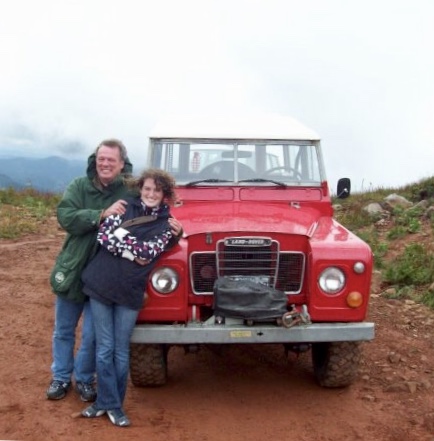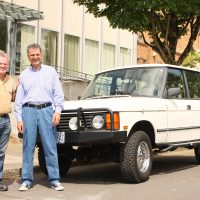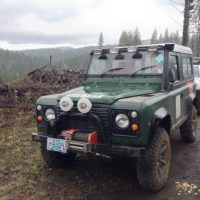
According to my notes, on June 18, 2009 — 10 years ago — I bought a 1973 Land Rover Series III 88.
The crude-but-entertaining 88 was the beginning of our exploration of the world of Rovers.
The Rover saga started with the 2009 annual Porsche Northwest Passage 1,000-mile tour. I was driving our 2002 Boxster S.
At the final dinner, the owner of the Rover came up to me and said, “I’m thinking of selling our Land Rover, and John Draneas (SCM’s Legal Files columnist) told me you were in the only one in the room crazy enough to be interested.”
John was right. I have always been intrigued by Land Rovers, perhaps starting when John Wayne strapped himself into a chair mounted on the front of one in the movie “Hatari” and proceeded to lasso baby elephants.
The asking price was about $8,000. A few days later, I test drove the rig. It was in decent shape with a 2.5-liter gasoline engine. It had overdrive you engaged with a separate lever. A winch was mounted on the front bumper (which I never actually used but looked very cool). The transmission popped out of first gear under deceleration. I decided, without doing any research, the transmission problem should be an easy fix. It wasn’t.
There were other things wrong with the Land Rover, but I learned about those later. Whenever you venture into a marque you are not familiar with, the first couple of cars you buy are always part of your learning curve.
I asked Portland, Oregon’s resident Rover guru, Doug Shipman of Ship’s Mechanical, what he thought of the rig. “You can do better” he said.
I completely ignored him because the rig drove okay, it was painted red with a white roof, I’d always wanted a Rover, and I could afford it.
“Damn the repair bills, full speed ahead,” was my motto.
Over the next few years the 88 provided a lot of excitement for me — and Alex and Bradley. While its primitive (and that’s being generous) leaf-spring suspension lost contact with the trails without any provocation, the ultra-low compound gearing let us crawl the rig up the sides of impossibly steep mountains. Yes, it was fun.
We had Shipman install a rebuilt gearbox for $4,000 (one-half of the original purchase price). Then, to get better traction, I had him install an air compressor and an ARB locking rear end (another $3,000 – are you getting the picture here?). First time out in the snow, I became so enthusiastic with my newly found traction that I ended up snapping both rear axles.
Rovers being simple devices, we simply pulled both the rear axles out on the trail, and drove home using front-wheel drive. We bought hardened axles and had them installed. Another $1,000.
Owning a Series III taught me that a Series IIA was more desirable. Their headlamps were inset into the grill inside of the front fenders. The Series III lights were on the fenders. Also, the IIA grille was metal instead of the SIII plastic. In Rover lore, in an emergency you could use the SIIA grille to cook a meal on, unlike the SIII plastic.
But now I was fully immersed in Rover World. I went on trail runs and to monthly meetings of the Pacific Coast Rover Club.
The 88 did not have power steering. After a particularly difficult trail, another Rover club member came to me and said, “I was thinking of putting power steering on my rig, but when I saw your daughter Alex muscling her way up the hill, I decided I could do without.”
Being in the Rover Club exposed me to many other Rovers. I ended up buying a 1988 Range Rover Classic that Alex and I drove up from Los Angeles to Portland over a Christmas holiday, stopping at every outlet mall along the way.
Then I spotted a RHD 1984 Defender 90 turbo-diesel for sale in Connecticut on eBay. I asked Shipman about it, and he said, “I think you can do better.”
Once again, it was “Damn the repair bills — full speed ahead.”
A few bids later, the D90 was mine for around $10,000. We sold the 88 to Colin Comer, who purchased it for his dad.
For a hair-raising moment I owned three Rovers, the 88, the D90 and the Classic. Driving them off-road brings on thrills and chills, but owning three is just scary in every way.
The Classic has moved on. The D90, after spending two years and $15,000 sorting it out, is still in the SCM garage, prepped and ready for our next adventure.
As crude and expensive as the 88 was, it was the beginning of our foray into the world of Rovers. And especially for Alex, who muscled it up and down so many steep hills, it provided adventures she could never have had in any other way.
And isn’t that the primary reason to have an old car? For the unique adventures it provides? I look forward to being back out on the trails.



